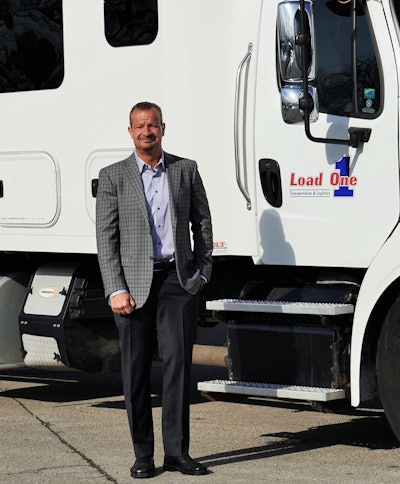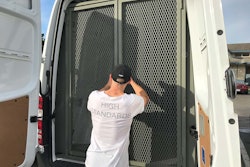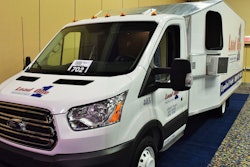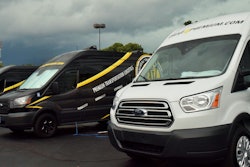Previously in this series: One cargo van owner’s competitive edge in vehicle configuration
It appears that relatively few cargo van owner-operators are hauling with their own authority in the expedited freight niche. It can be done, says Shelly Benisch, a CIS (commercialinssolutions.com) insurance agent well-known in the expediting world. Regulatory insurance requirements for under-10,001-pound interstate operations sit at a minimum $300,000 in commercial auto liability, less than half the $750,000 required of larger units. As in the Class 8 world, though, $1 million liability is a common coverage.
Also similarly, policies can be prohibitively expensive for new authorities, but that’s not the biggest challenge, Benisch says. As usual, it’s the freight: “There is no magical internet board” dedicated to cargo vans.
Some independents with cargo vans have supplemented primary hauling contracts, as in traditional independent owner-operator models, by using common freight boards, such as DAT or Truckstop.com. Benisch notes, however, the “main for-profit hubs of Omnitracs/Sylectus and Full Circle” – collaborative networks built with capabilities specific to expediting – “have contracts with their current clients that restrict anyone new coming on board without some hoops.”

The same goes from some of the freight-specific bid boards, with limitations of access relative to the carrier’s size.
Such hurdles prevent “a leased-on owner-operator from leaving his motor carrier” to start his own authority “and backselling to take the customers,” Benisch adds.
Around the time of the Great Recession, many van drivers were desperate for any way to stay loaded. A multicarrier model arose in which van owner-operators essentially negotiate loads in leased arrangements with a multiplicity of expedited carriers. It’s presented some of the same opportunities and challenges that traditional Class 8 independents encounter when working with multiple brokers in spot freight, but without the need for the independents to have motor carrier authority.
“Many still like that independence and believe they make more money hauling for multiple companies,” she says. Some motor carriers “have come to respect it in some cases because of the current litigious climate regarding the independent contractor model.” Leasing with multiple carriers is an obvious sign of such contractors’ independence of direction and control.
However, Benisch notes, “larger, more established motor carriers on the traditional structure” – the exclusive lease to one carrier – “hate it.”
Cue Load One head John Elliott. He believes the multicarrier model makes for an artificial cargo-van supply boost on the bid boards and freight networks where much expedited business takes place.
Assume an available load and two vans in the area, one of them his, Elliott suggests. If the competing van “hauls through three carriers … he tells all three dispatchers” about his availability. To the shipper with the load, it easily could look like four competing vans, creating conditions ripe to drive down the rate.
Insurance issues also are not uncommon for multicarrier haulers.
“All our vehicles run for us and are logo’d,” Elliott says of Load One. “We provide liability and cargo insurance for all the vehicles.”
 COMBATING EXPEDITING’S LONG WAITS BETWEEN LOADS | Catch two editions of the Overdrive Radio podcast featuring sections of a conversation with Load One CEO John Elliott via this link and this link, the latter including his thoughts on the multicarrier leasing model. Elliott also detailed Load One’s “Ultimate Advantage” smartphone app for its owner-operators and drivers. The app was deemed to be the No. 1 innovation among those featured last year by Overdrive sister fleet publication Commercial Carrier Journal. The innovation, used by the vast majority of Load One’s operators, has data on available loads and missed load opportunities in any given area and for different time periods. Its data helps owner-operators reduce empty miles and the long waits between loads that are common in expediting.
COMBATING EXPEDITING’S LONG WAITS BETWEEN LOADS | Catch two editions of the Overdrive Radio podcast featuring sections of a conversation with Load One CEO John Elliott via this link and this link, the latter including his thoughts on the multicarrier leasing model. Elliott also detailed Load One’s “Ultimate Advantage” smartphone app for its owner-operators and drivers. The app was deemed to be the No. 1 innovation among those featured last year by Overdrive sister fleet publication Commercial Carrier Journal. The innovation, used by the vast majority of Load One’s operators, has data on available loads and missed load opportunities in any given area and for different time periods. Its data helps owner-operators reduce empty miles and the long waits between loads that are common in expediting.For a multicarrier cargo van owner-operator, just as if the owner had his own authority, commercial auto liability and cargo insurance is going to be necessary to make coverage portable between entities, Benisch points out.
The multicarrier model can be done legally, Elliott says, but “we’ve seen plenty of cases where that is not how it’s done.” The leasing carrier may have an insurance certification filed with DOT for one van but have a variety of other multileased owner-operators running for him. In such cases, “there’s no way to verify that insurance is in place” when the van is hauling a load for that carrier.
Elliott contends some van operators, given the expense of commercial auto liability, will just “call their local State Farm agent” for a personal auto policy and hope to run under the radar.
Next in this series: Delivering cannabis — and cash — in California












